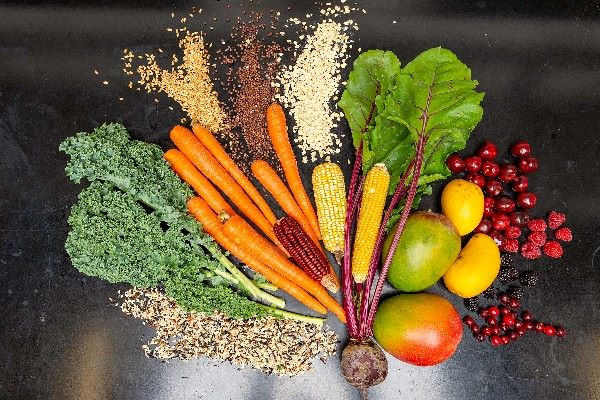AgriLife Extension expert gives tips for making healthy eating resolutions attainable and sustainable
Eating healthier is one of the top resolutions for the new year, but this resolution is often abandoned because people set unrealistic goals that are too difficult to maintain.
A Texas A&M AgriLife Extension Service expert has tips for establishing realistic healthy eating goals that can last.
Don’t force the New Year’s Day start date
Allow yourself some flexibility, said Jenna Anding, Ph.D., RDN, professor and AgriLife Extension specialist in the Texas A&M College of Agriculture and Life Sciences Department of Nutrition, Bryan-College Station.
Start implementing new habits when you’re ready as opposed to a specific start date. This can provide a better chance for success.
“After Christmas and at the first of the year, there is still a lot going on,” Anding said. “Starting a new habit on Jan. 1 may work for some people but not for others. Pick a day when you know you can start with a good amount of confidence.”
Make use of known healthy eating styles

A healthy diet is one that is rich in vegetables, fruits, whole grains, nuts, seeds, lean meats and dairy products. So, eat more of these basic nutritious foods, and cut back on your salt and sugar intake. If making dietary changes seems a bit overwhelming, start with just one. You don’t have to construct an entirely new eating style on your own if that seems daunting.
For example, Anding suggested adding components of the Mediterranean diet to your weekly routine. This includes using plant oils, vegetables, fish and nuts. As you add healthy foods, cut unhealthy treats heavy in sugar and/or salt.
Set small, measurable goals
Make specific, measurable goals. They will be easier to achieve, and a specific goal gives you something to work toward.
“For example, if you want to include more vegetables in your diet, commit to one more serving of vegetables a day,” Anding said. “Or, if you’re currently eating out for four or five meals a week, try to cut it back to three. When that change becomes comfortable and a true habit, then you can work on something else.”
The key is to make each specific change a healthier habit.
Use milestones and reward yourself
Establishing these smaller, attainable changes will help you reach your broader goal and see results along the way. For someone planning to lose 30 pounds, for example, setting the goal to lose 5 pounds every two months can help with making steady progress.
“If you have small, incremental goals, you’ll get that internal sense of satisfaction and accomplishment every time you meet one,” Anding said. “That’s going to help with motivation and can really help keep people on track. And once you’ve reached a milestone, remember to treat yourself.”
Don’t use the scale as your guide
Even if a healthy eating goal is part of a plan to lose weight, try not to be a slave to the scale, Anding said.
“For changes to be sustainable and truly healthy, they shouldn’t be constructed around what will lead to the most weight loss in the shortest amount of time.”
Make cooking at home as enjoyable as possible
Food made at home is usually less expensive, healthier and has less fat and calories than food from a restaurant. And making meals yourself allows more control over ingredients.
“If you’re having trouble convincing yourself to cook at home, do whatever you can to make it more enjoyable,” Anding said. “This might include listening to music or a podcast you enjoy. Or you might involve other family members in helping you cook.”
Share goals with friends and family
Making a successful lifestyle change will be much easier if the people around you are aware of your goals and willing to support your efforts.
“Let family and friends know about your healthy eating goal so they can be supportive,” Anding said. “And if possible, surround yourself with people trying to accomplish a similar goal. This way, you can develop a support system that helps keep you accountable and gives you encouragement when needed.”
PHOTO: A healthy diet is generally considered one that is rich in vegetables, fruits, whole grains, nuts, seeds, lean meats and dairy. (Michael Miller/Texas A&M AgriLife)




